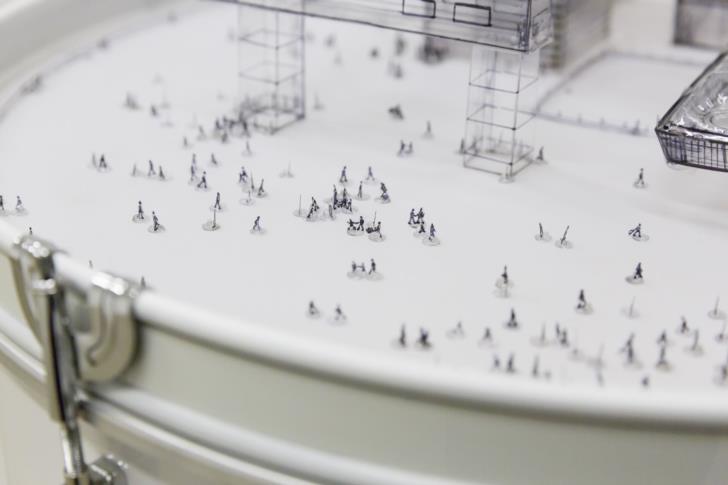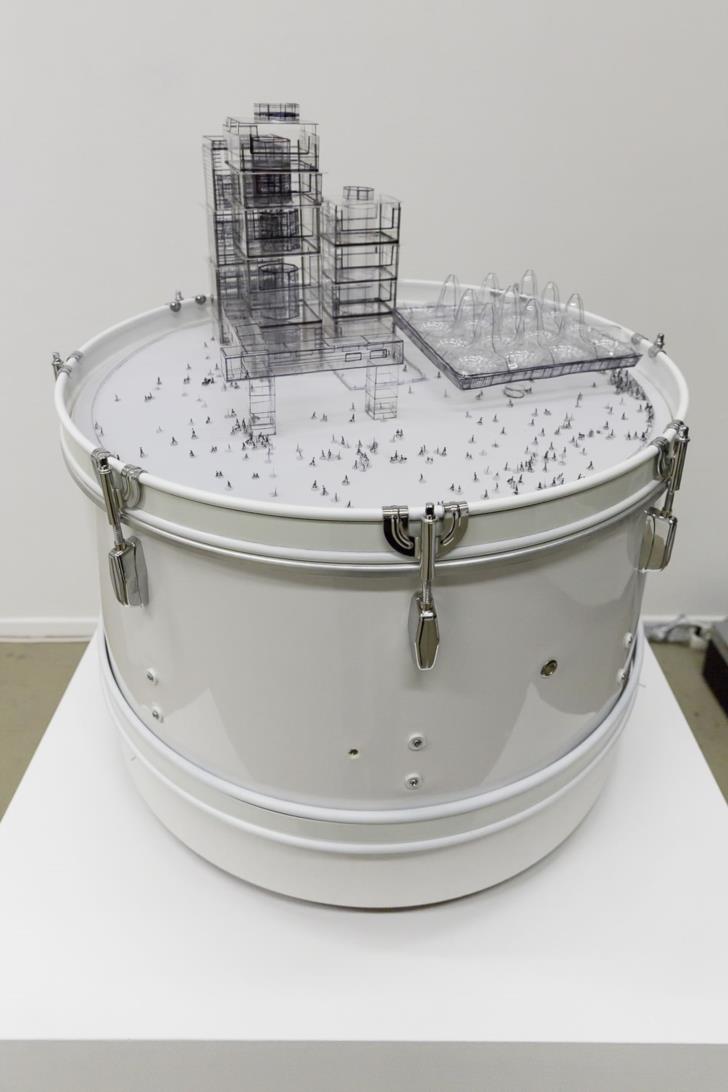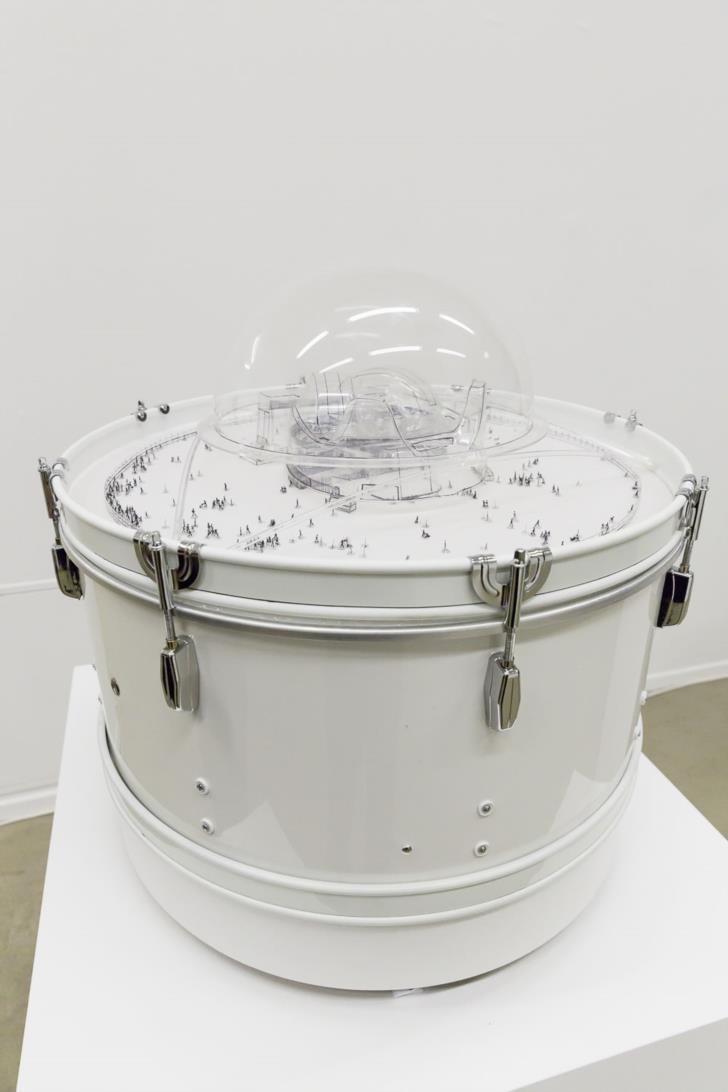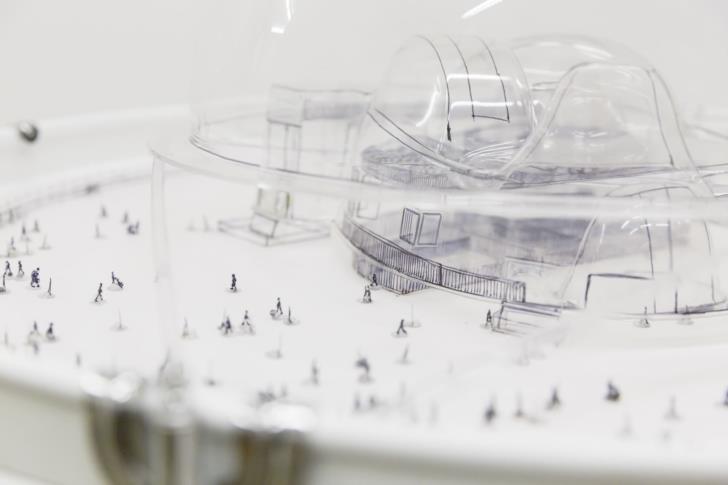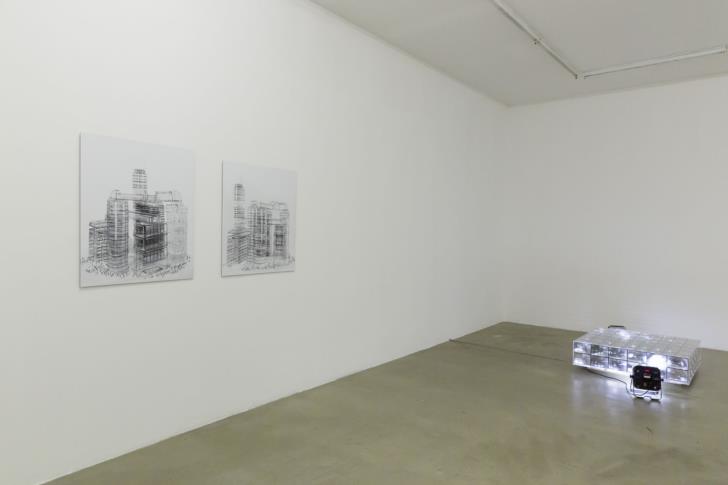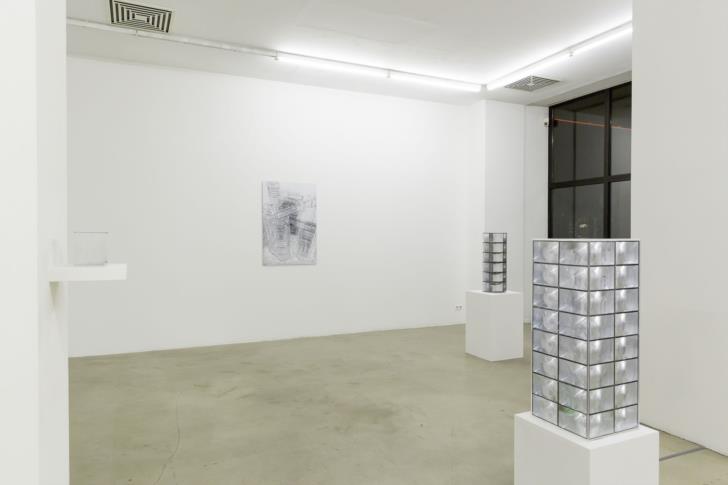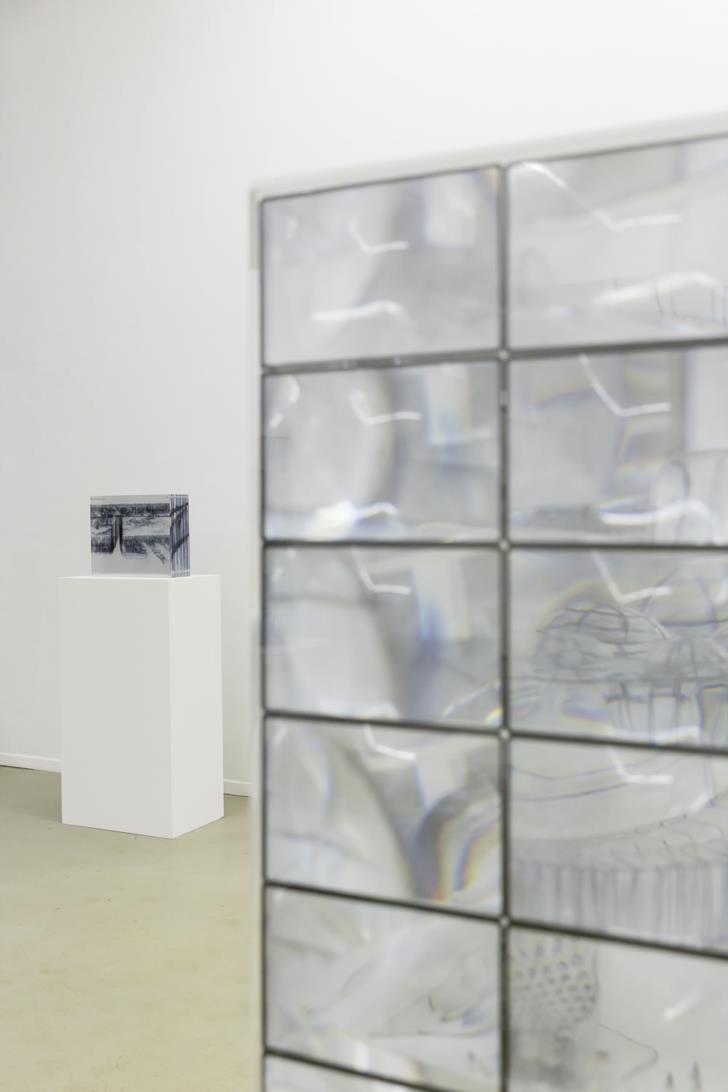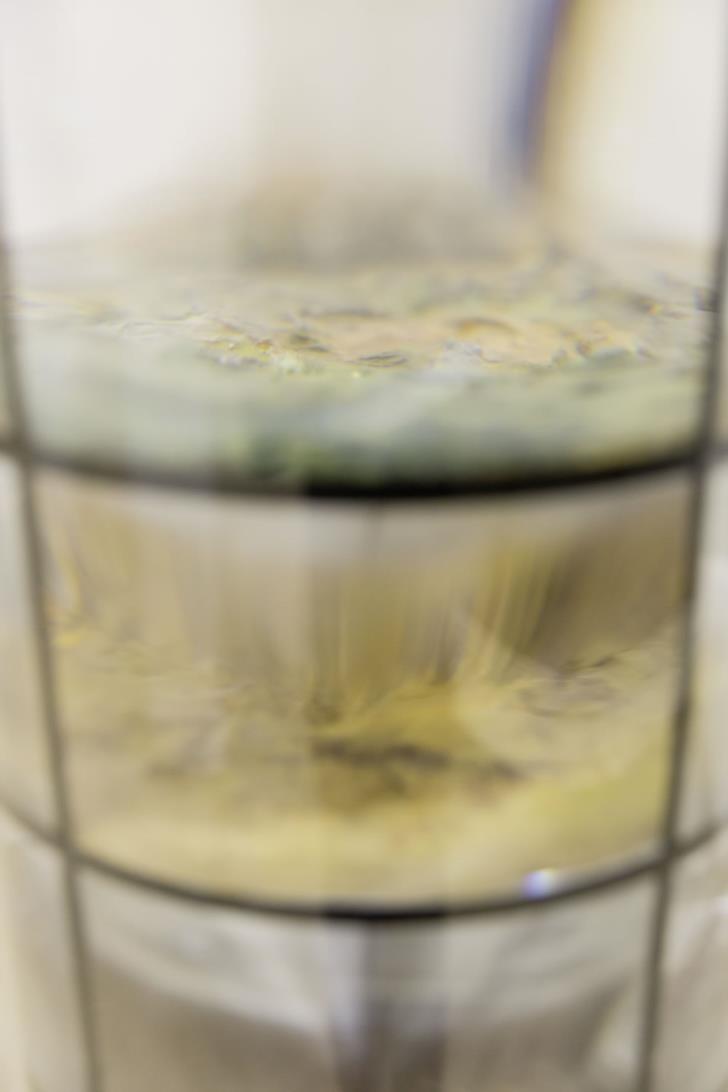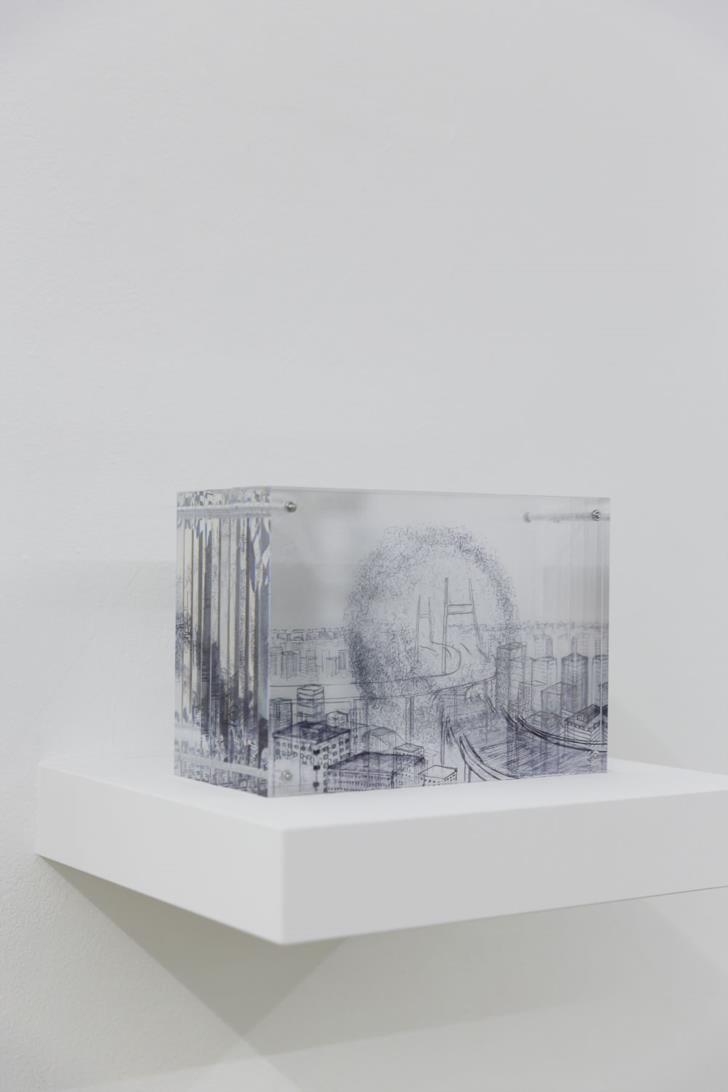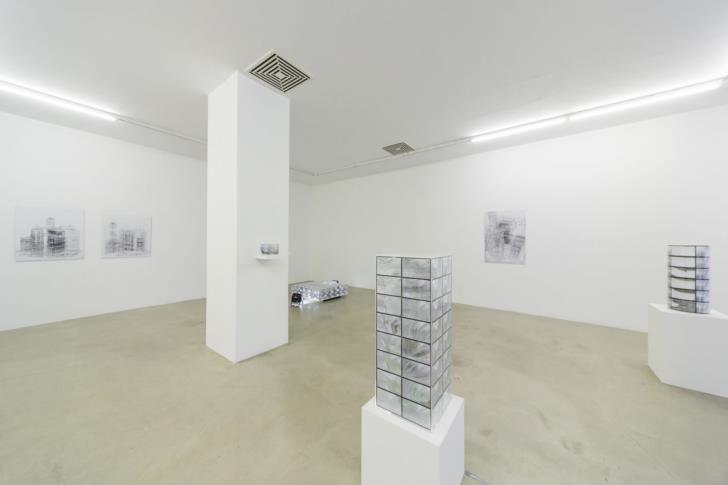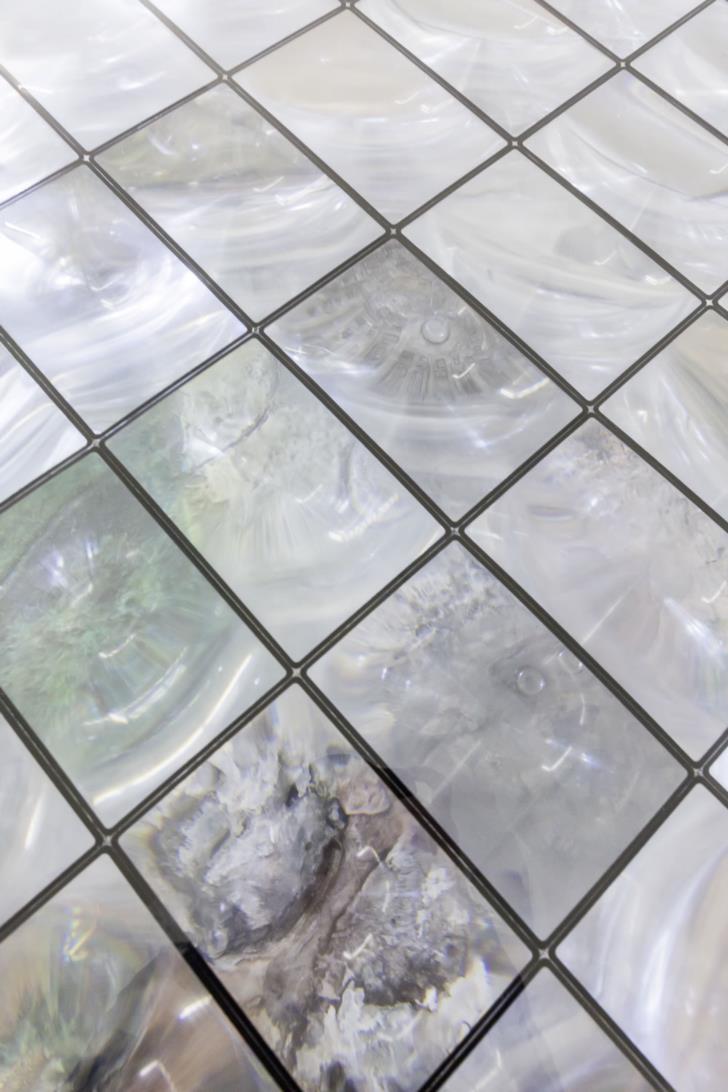Friederike Klotz
Bedeckter Himmel
8 February – 29 March 2014
Friederike Klotz designs futuristic settlement systems whose strictly monitored population is subordinated to a rhythmic organization. With the complete abandonment of everything private, the public dominates, the individual becomes part of the collective, the city becomes a highly efficient economic unit. Friederike Klotz designs futuristic settlement systems as anti-utopias. Today, utopia has become a controversial term whose contradiction fluctuates between idealized society and social nightmare.
Ecological considerations also play a role: the artist recycles packaging material and creates the modules of her cities from it. In the exhibited works entitled National Hymns, 2010 (drum, acrylic glass, marker, loudspeaker, each diameter 55 cm, height 40 cm), their foundations rest on a membrane, under which in turn there is a loudspeaker. The vibration of the membrane sets the figures in the city in motion. They wander around in the midst of the buildings, driven and manipulated by the sound within the resonating body. Although this city system clearly separates the various functions - such as private and social areas, areas of consumption, control and surveillance - one lives here in complete dissolution of everything private, because all walls are transparent. The rhythm of recorded agitational music (greatly slowed-down national anthems), to which the tiny inhabitants are set in vibration, recalls strictly hierarchically controlled social systems and at the same time renders their ideological or economic-purpose rational ad absurdum. With their detailed planning, such models also harbor a high degree of social control and thus highlight the danger of the emergence of totalitarian rulership structures. The fine line between smooth functioning and absolute control becomes clear here.
Friederike Klotz, born in Berlin in 1966, studied sculpture with Bruno Gironcoli (1936-2010) at the Academy of Fine Arts and the University of Applied Arts in Vienna. In 2010 she won the prize of the Triennale Kleinplastik Fellbach. The artist lives and works in Berlin.
Kindly supported by


